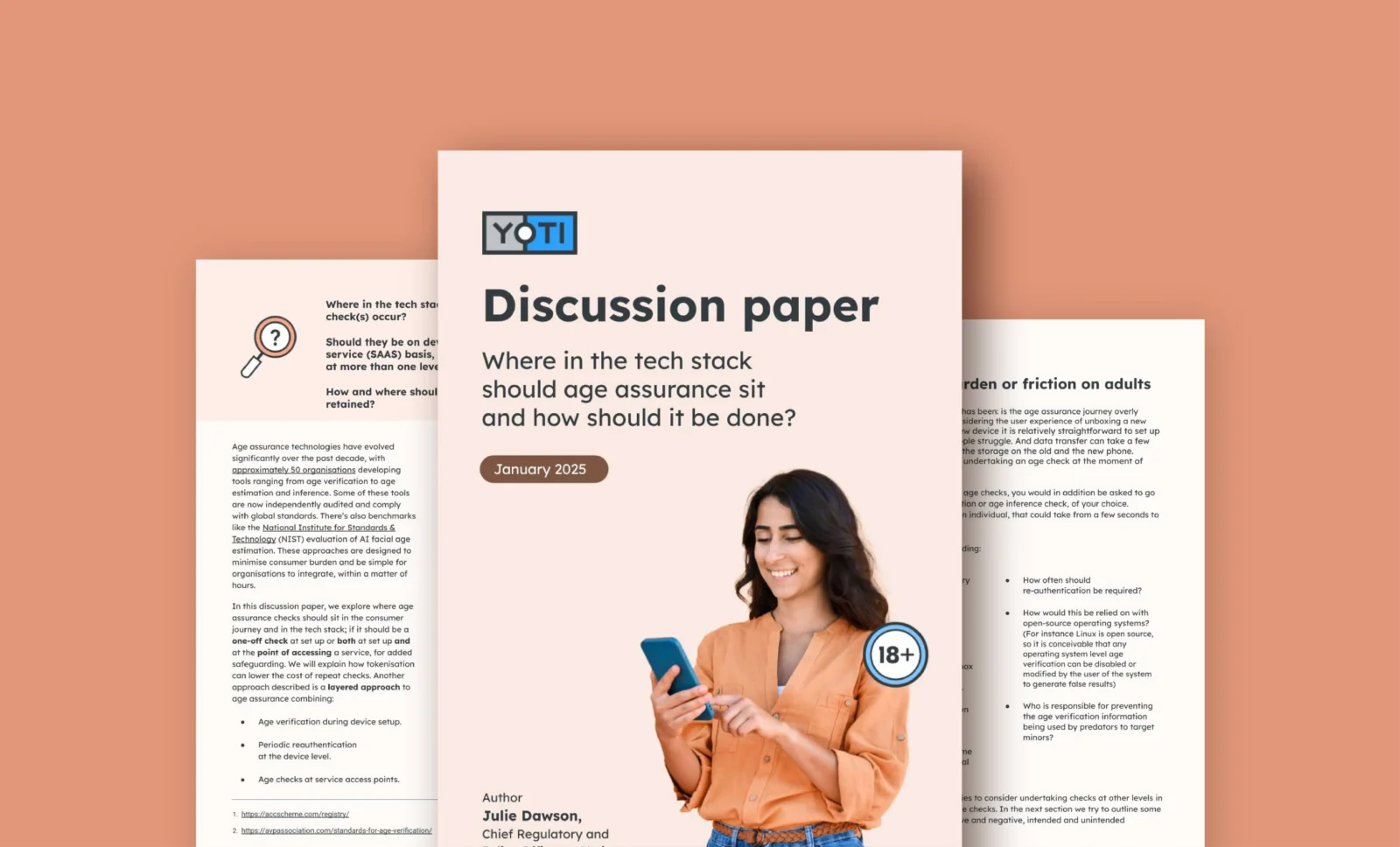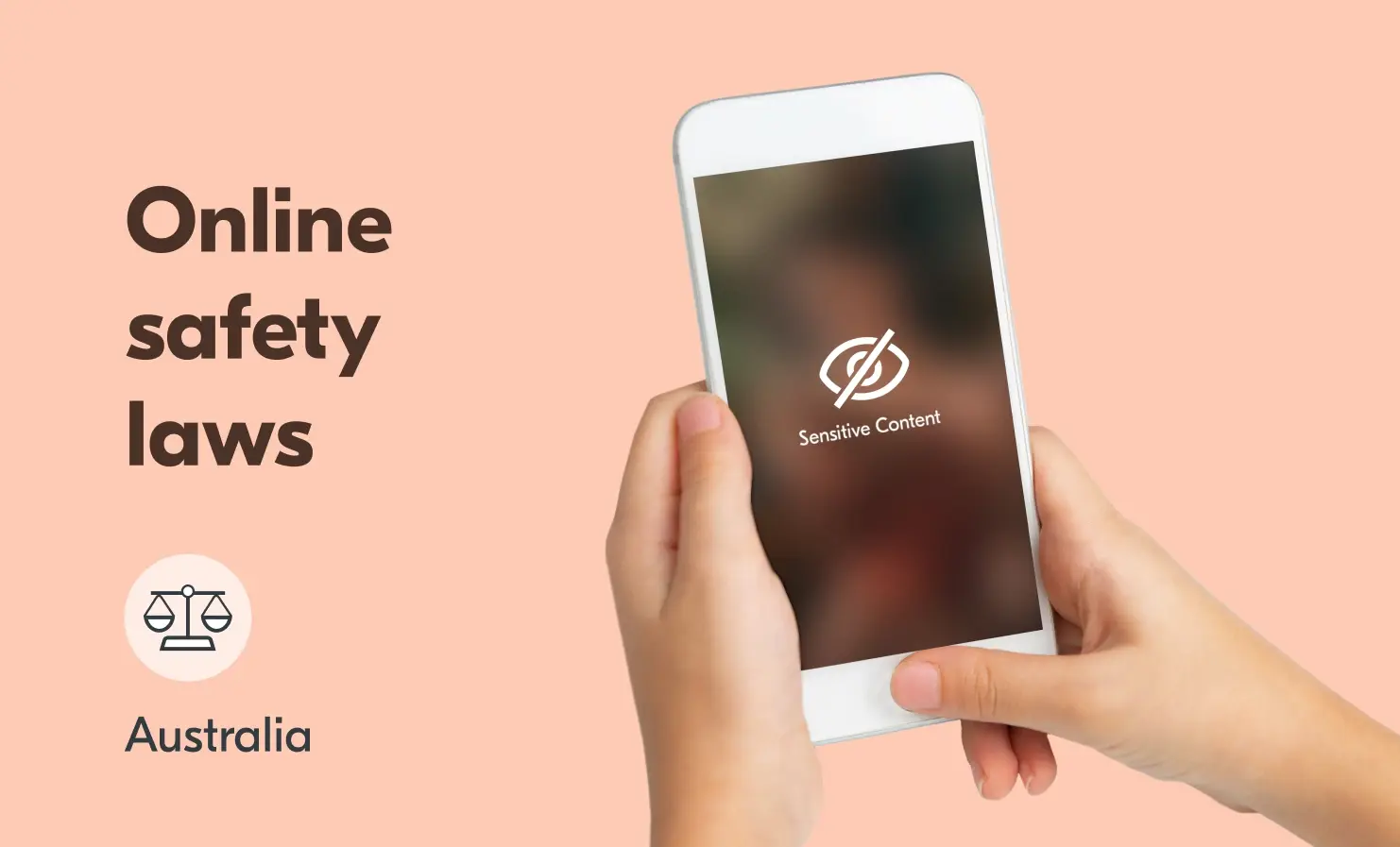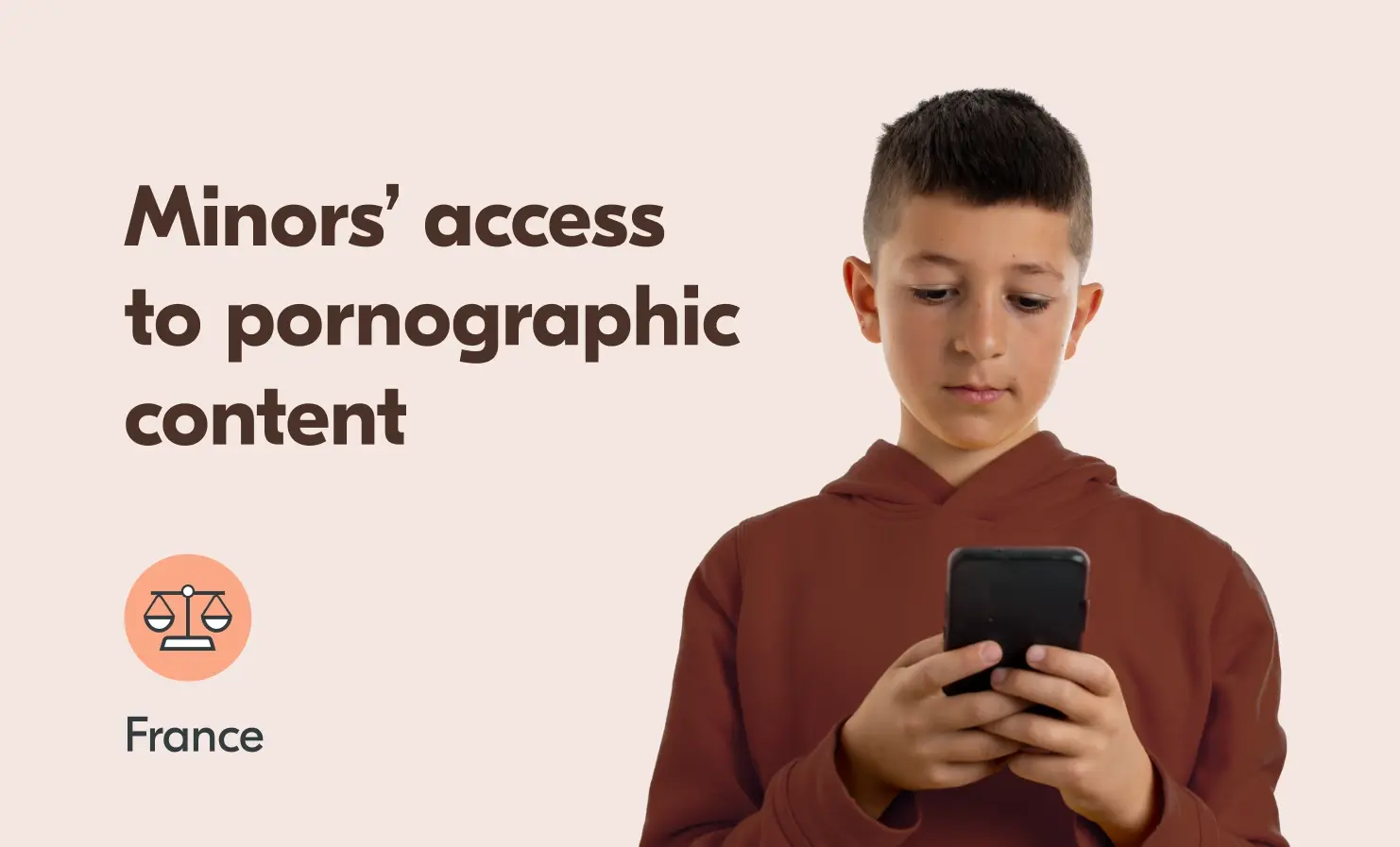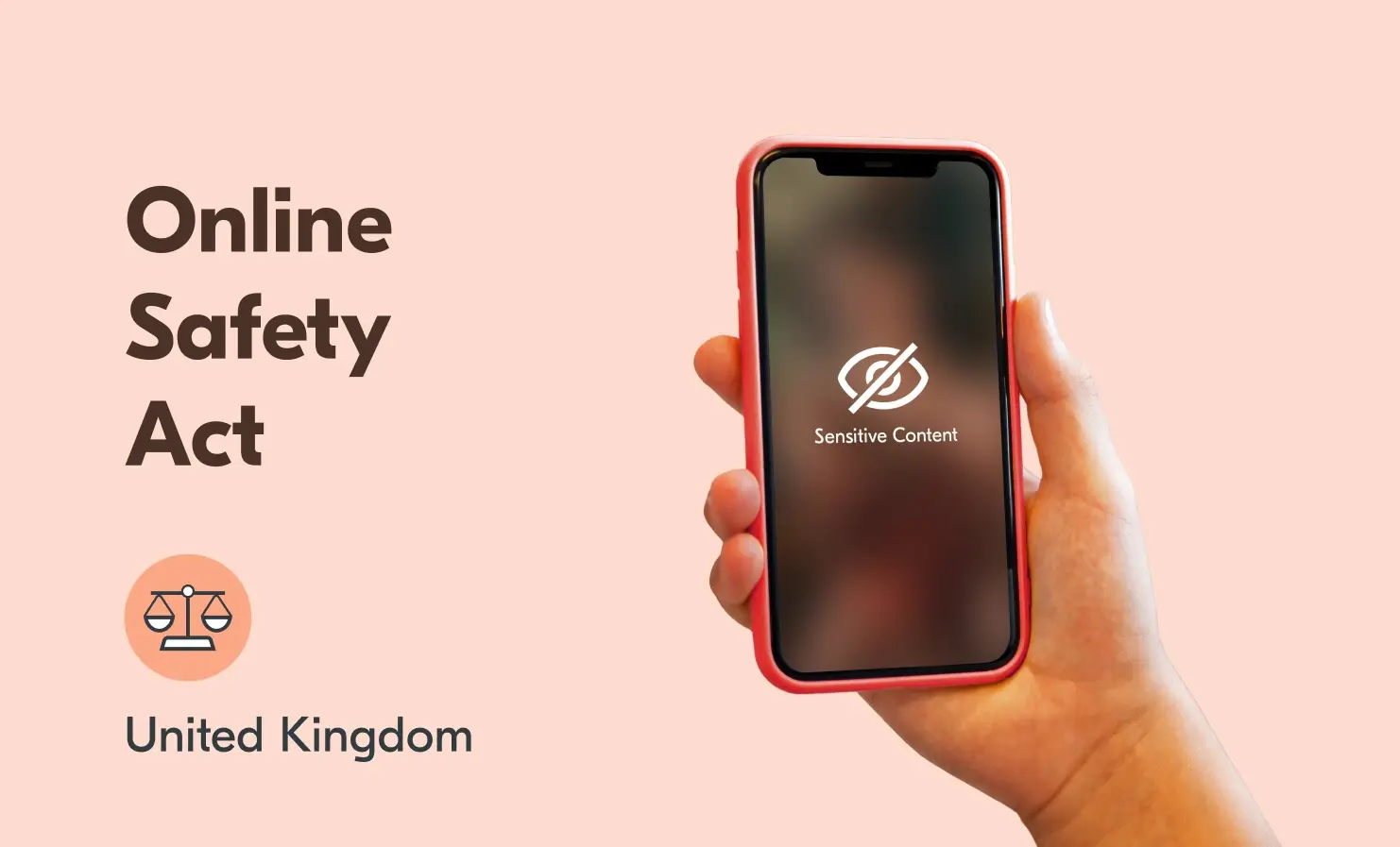Age assurance
Discussion paper: Where in the tech stack should age assurance sit and how should it be done?
This discussion paper discusses where in the tech stack should age assurance checks occur? Should they be on device on a software as a service (SAAS) basis, at operating system level, or at more than one level in the tech stack? Yoti’s view, weighing the factors discussed in this paper, is that the optimal placement of age assurance within the tech stack and consumer journey depends on balancing customer convenience, privacy and operational feasibility. DOWNLOAD
Yoti announces participation in the Australian Age Assurance Trial
On 28th November 2024, the Australian Government passed the Online Safety Amendment (Social Media Minimum Age) Bill 2024. This legislation will prevent anyone aged under 16 from accessing social media platforms. It aims to protect young users from harmful content and interactions. Set to begin in early 2025, the Age Assurance Technology Trial will test the effectiveness of age assurance technologies – spanning verification, estimation and inference. By testing various methods, the Australian Government hopes to identify robust and scalable solutions to enforce minimum age limits across platforms. Initial insights were made available from June 2025 with a final
Navigating Australia’s online safety laws
As the digital landscape continues to evolve, regulators are prioritising online safety. Countries around the world are introducing new legislation that aims to protect people online and create safer, age-appropriate experiences. What’s the current state of online safety legislation in Australia? As the internet has become a central part of daily life, Australia’s approach to online safety has evolved over time. Online safety laws were initially more reactive, focused on specific issues such as cyberbullying and child exploitation. However, over the past decade, legislation has become more comprehensive. New laws aim to prevent harm and promote a safer
Age Check Certification Scheme evaluation for Yoti Facial Age Estimation
We are pleased to announce Yoti has been re-evaluated by the Age Check Certification Scheme (ACCS) for our facial age estimation (FAE) on our latest September 2024 model. ACCS now report our Mean Absolute Error (MAE) for 18 year olds is just 1.05 years, with a Standard Deviation (SD) of just 1.01 years. ACCS first tested Yoti’s September 2020 model in November 2020, reporting the MAE for 18 year olds to be 1.79, demonstrating our continued effort to improve the performance of our model. Yoti has been training its FAE model since early 2018 by using data captured mainly
French regulator Arcom introduces age checks for online adult content
In October 2024, Arcom, the French regulator responsible for online porn, announced that adult operators and platforms with pornographic content need to introduce age checks, ensuring only adults can access the content. These rules are effective from 11th January 2025. There will be a three month transitional period, where temporary methods like bank card verification can be used as a preliminary age filter, but they must include strong authentication to ensure that the user is the cardholder. After the transitional period ends on 11 April 2025, adult site operators will need to have taken the following steps: Age checks
Understanding age assurance in the Online Safety Act
The Online Safety Act 2023 is a piece of UK legislation that aims to protect children and adults online. It covers a wide range of issues including minimising the risk of children seeing harmful and age-inappropriate content, removing illegal content like child sexual abuse material (CSAM), criminalising fraudulent and scam ads, and introducing age verification for certain online services. This blog looks at some of the age requirements in the Online Safety Act and what this means for tech companies, adult sites, gaming companies, social media platforms and dating sites. What is the purpose of the Online Safety






